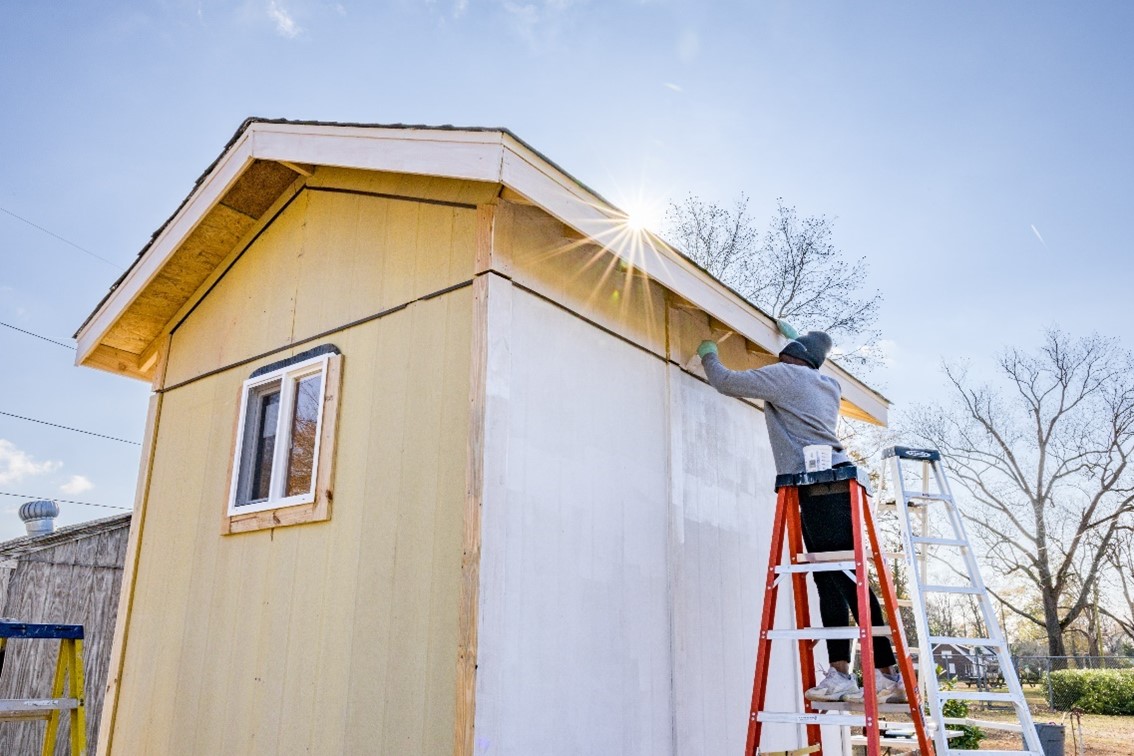Judgment ordering destruction of nearly complete structure due to restrictive covenant violation upheld on appeal.
In Burkett v. Stevens, 684 S.W.3d 399, 401 (Tenn. Ct. App. 2023), the Tennessee Court of Appeals upheld a harsh ruling which ordered Defendant to abandon and destroy her nearly complete “cottage” in light of a restrictive covenant. The restriction had been imposed onto an original lot which was subsequently divided into sub-lots, one of which was owned by the Defendant.
In March 2021, subdivision residents sued a fellow property owner for declaratory and injunctive relief to prevent the Defendant from completing a 400 square foot structure on her property.
The Defendant’s property was located in a subdivision established in 1949 by the Tennessee Valley Authority (TVA). The Defendant’s lot, “Lot 40R1” was one of two lots which together had originally comprised the original “Lot 40.” Lot 40 had been partitioned into Lot 40R1 and Lot 40R following the death of the Defendant’s parents. Lot 40R, originally owned by the Defendant’s sister, was eventually obtained by the Carlyle family.
In establishing the subdivision, TVA included a strict covenant in the title to the original Lot 40 that was to attach and run with the land to subsequent owners. The covenant required (1) that the land only be used for private residential purposes and (2) that the owner build nothing other than “a single dwelling . . . with necessary and appurtenant outbuildings.”
At some point, both the Defendant and the Carlyle family began building structures on their respective lots. The Defendant sought to build a 400 square foot “cottage” on her lot comprised of a single room and small bathroom, while the Carlyles were building a residence. Though it is unclear who began construction first, the Carlyles finished constructing their residence when the Defendant had completed 80-85% of her build.
Upon completion of the Carlyle residence, the Plaintiffs sent a demand letter to the Defendant informing her that she was in violation of a restrictive covenant and was to halt construction immediately. The Defendant proceeded with her project, and the Plaintiffs filed their claim for injunctive relief.
In May 2020, court the Trial Court begrudgingly entered a final judgment granting the Plaintiffs’ requested relief. The court stated that the restrictive covenants were binding despite the division of the lot, and the Defendant was ordered to remove the structure from the property. The judge called it a “gruesome conclusion” and clarified that the Defendant “can’t build a thing” on her property.
The Defense appealed the final judgment to the Tennessee Court of Appeals at Knoxville. The issues on appeal were (1) whether the Trial Court erred in declaring that the restrictive covenant required that the Defendant’s cottage be removed; (2) whether the Plaintiffs’ claims are barred by the doctrine of waiver; and (3) whether the Trial Court erred in granting mandatory and permanent injunctive relief.
On the first issue, the Defense made three arguments that the Trial Court erred in interpreting the restrictive covenant. First, the Defense argued that the small cottage did not constitute a “dwelling” and thus was not in violation. The Court disagreed, stating that regardless of whether the Defendant intended to live in the cottage, she could live there and could sell it to a buyer who did intend to reside there. Further, the court stated that even if the cottage did not constitute a dwelling, it was still in violation of the restrictive covenant because it was not a “necessary or appurtenant outbuilding” to the Carlyle residence. Second, the Defense contended that such a strict ruling could not have been the intention of the TVA. The Court stated that the TVA’s contemplated intention was irrelevant because the covenant was “crystal clear.” Finally, the Defendant attempted to argue that they had not violated the covenant because, even though she hadn’t finished building first, she started clearing her land first. Once again, the Court favored the Plaintiffs, stating that this argument was unnecessary because whether or not the land had been cleared, the structure was not completed until after the Carlyle residence was.
On the second issue, whether the Plaintiffs waived their claim, the Court also found for the Plaintiffs. The Defendant argued that the subdivision was “already riddled with nonconformities and violations” which made it unfair for her violation to be strictly enforced. The Court disagreed and cited the strict requirements for a community violation to constitute a violation, established through caselaw.
To establish abandonment of a community restriction through violation, the violations must “be so general as to frustrate the object of the scheme with the result that enforcement would seriously impair the value of the burdened lot without substantially benefitting the adjoining lots.”
Burkett at *408.
While the Court acknowledged the doctrine of waiver, they contended that the Defendant failed to provide sufficient evidence or testimony to meet their burden of proof. The other violations in the subdivision were not comparable to the Defendant’s.
On the final issue, the Court upheld the Trial Court’s grant of mandatory and injunctive relief. The Defendant argued that there were inadequate findings to support the harsh order, especially pertaining to the fact that the Plaintiff would not suffer harm if the relief had not been granted. Additionally, the defense claimed that affirming the Trial Court’s ruling would amount to a forfeiture of her land because she would be unable to build anything upon it. The Court responded, stating that the Defendant knew or should have known about the state of her title and that such a violation of a clear covenant could not be condoned. The Court also pointed out that allowing the structure and similar structures to be built in violation may result in obstructions to the view of the nearby lake and result in a more crowded subdivision than was intended by the TVA.
The Trial Court’s ruling was completely upheld by the Court of Appeals, and the Defendant was ordered to remove the near-complete structure from her property.
What’s the takeaway?
Such a harsh ruling may serve as a reminder to do a thorough title search when property is attained to illuminate any restrictions on the land. Further, before beginning construction, an owner should perform due diligence to ensure that such a project would not constitute a violation of any applicable restrictive covenants.
Photo credit: City of Greenville, North Carolina licensed under PDM 1.0





